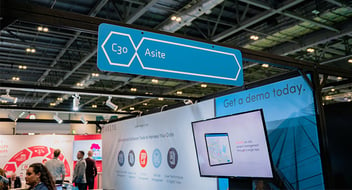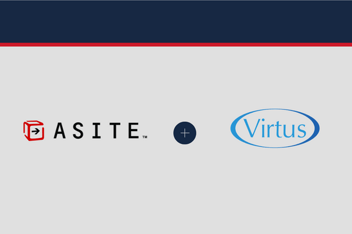
In 2023, the global construction industry is expected to reach an estimated $10.5 Trillion. Despite recession headwinds and pandemic impacts, the construction industry continues to be big business with far-reaching ripple effects.
Any project—large or small—requires massive coordination with loads of documents and data shared, revised, and updated. Whether you’re an owner, contractor, subcontractor, estimator, superintendent, or part of the supply chain, the last thing you want is expensive rework or worse.

For many, an audit trail may mean keeping a paper trail of all project-related data and details. But if the paper is misplaced or stored incorrectly, you can miss a detail, submit a low bid, fail to communicate change orders, or even worse—lose track of critical documents.
The answer? A robust audit trail can provide an accurate, indisputable record of everything that occurred on a project from design to bid to build and closeout.
With an audit trail, you’ll have the ability to verify how much the materials vendor agreed to pay for lumber, and all records of dates, times, and transactions in case of disputes or litigation.
What’s At Stake When Things Go Wrong
When things go wrong in construction, the impact can be costly. The cost can come in the form of dollars.
One study found that nine out of 10 projects experience cost overruns, with an overall average cost overrun is 28%. Considering the size of the construction industry, this is a staggering figure. There are multiple things construction companies can do to reduce cost overruns, including utilizing data.
But cost overruns are secondary to accidents that occur when there are construction failures. On June 17, 2014, a fire broke out in Grenfell Tower in west London, and 72 people lost their lives in what the BBC called “one of the UK's worst modern disasters.”
The failings that led to the tragedy “could be directly attributed to poor auditing and no shared responsibility that an audit trail brings with it” according to an article from UK’s Building Magazine. The article goes on to note that the government, via the Building Safety Act, has “…changed the way projects are managed. The golden thread, a digital record of all key building information, is a central part of these reforms.” It is one of many new laws impacting UK construction.

What is An Audit Trail?
While audits may conjure up images of the IRS, they are relevant and useful for the construction world.
An audit trail can be defined as, “a date and time-stamped, a sequential record of the history and details around a financial transaction, work event, product development phase, or financial ledger entry…the overarching theme and purpose of the audit trail is to track a sequence of events and actions in chronological order.”
Ultimately, an audit trail tracks who did what and when. The running tab has many benefits that positively impact the entire construction process and every team member.
3 Benefits of an Audit Trail
1. Increases Communication and Collaboration
Studies show that up to one-third of construction fails are due to poor communication. On the flip side, collaboration is invaluable.
Audit trails improve communication and encourage collaboration. An audit trail begins at the start of a project and continues until its completion. By tracking relevant construction documents and enabling all the key players' access to information, an audit trail keeps everyone in the loop.
The excuse that A didn’t know that B made a change is off the table. Whenever construction documents are uploaded, work is done, or changes are made, the information is captured on the audit trail. Everyone can be notified of changes and react accordingly.
Because key players can review the audit trail, they can easily determine who did what. So, there’s no guesswork, and the time-consuming process of playing detective is eliminated. Speeding up and simplifying the process of determining who or what made what change/addition encourages conversations between team members.
An audit trail makes it easier to clear up uncertainty, question information, and suggest other ways of doing things. It fosters communication between the appropriate parties, encourages greater collaboration, and helps projects go more smoothly.
2. Encourages Responsibility & Ownership
The construction industry, from the back end to those in the field, is facing workforce shortages. Because of the shortages, companies are forced to do more with less. Technology and robotics are helping to fill the gap, but strains remain.
Many in the industry feel pressed to get more done in less time. This can lead to people cutting corners, making assumptions, and taking risks.
In addition, as the construction industry strives to build up its ranks and bring in new blood, experience is lost. While bringing in young (and often more tech-savvy) employees is beneficial and necessary in the long run, it can be challenging in the short run. New employees have little real-world experience, so learning takes place on the job. Inevitably, more missteps will occur.
An audit trail is beneficial in multiple ways. Because the team has clear and easy access to what has occurred on the project, they can more easily determine what their responsibilities are. There’s less guesswork when everything is spelled out. It makes the process flow more smoothly, which is particularly helpful for newbies to the field.
Secondly, missteps can be identified and attended to more quickly. When steps are documented, issues are less likely to fall through the cracks and result in construction not being done as intended.
3. Protect in the Case of Litigation
Large construction projects are complex and costly. When mistakes/issues arise, one of the many parties involved in a project may be subject to a legal suit. In 2019, 30% of construction projects ended in dispute.
Disputes can drag on for months, with the global average dispute length of 15.4 months in 2021. The global average dispute value was $52.6 million in 2021. This means disputes are happening on significant projects.
Three primary reasons were identified as the reasons for disputes:
1. Poorly drafted or incomplete and unsubstantiated claims.
2. Errors and/or omissions in the contract document.
3. Owner/Contractor/Subcontractor failing to understand and/or comply with its contractual obligations. Owner-directed changes.
An audit trail can help prevent issues from mushrooming, so parties can avoid the time-consuming and expensive litigation process. If disputes arise, they can be handled before they get to the point where parties feel a need to go to litigation. Owners, general contractors, and subcontractors can move forward and preserve healthy, productive work relationships. With the audit trail's running record, it's clear who did what and when and who is responsible for what.
And if a project goes into litigation, an audit trail can often make clear who is responsible and where the fault lies. Because they have an audit trail, project owners can more convincingly make their case and have a better chance of winning the dispute.

How a CDE Can Help
Whether it's drawings, estimates, or contracts, your typical construction project generates a massive amount of data. This is usually disorderly data that is unstructured, uncoordinated, and inaccessible. With a Common Data Environment, you can create a central and secure repository where all construction project information is stored.
A CDE provides a single source of information for the project. It is used to collect, manage, collaborate, and share project information with the project team.
You can easily divide different aspects of real-time information into well-structured data to quickly analyze and develop key insights. Additionally, a CDE provides a powerful audit trail that gives full control and security at each process step. This online hub acts as an all-in-one location of all information so you can reduce errors and wasted time—plus avoid duplication of efforts.
This means everyone from the architect, to the estimator, to the site foreman can work from a single source of truth. You'll get an audit trail in a secure and interoperable digital environment—not a dusty old filing cabinet. The benefits to you and your supply chain are immense—from streamlined processes to stronger collaboration to shared project visibility.
Asite serves as a centralized hub for all project documents, with a full audit trail ensuring the team is working on the correct version. The extensive audit trail encourages communication and responsibility by all parties and serves as a record that can be reviewed if a construction project goes into litigation.
Want to learn more? See how Asite’s Common Data Environment (CDE) helps you successfully deliver projects with highly configurable workflows that work with your processes, real-time dashboards that deliver complete project visibility, and painless, easy collaboration tools so you can keep your project on track. Learn more here.
Larry Bernstein
Larry is a New Jersey-based writer who specializes in construction and construction technology.
5 minute read
Asite Insights in your inbox.
Sign up for product news and our latest insights published monthly. It's a newsletter so hot, even global warming can't keep up.


